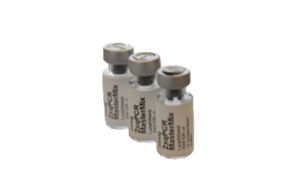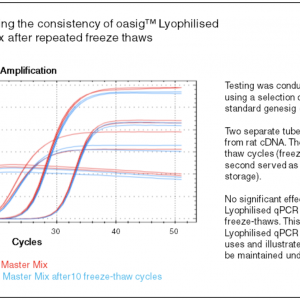All Pathogenic Salmonella Species
$462.40 – $901.00
In Stock & Ready to Ship
Product features
- Exceptional value for money
- Rapid detection of all clinically relevant subtypes
- Positive copy number standard curve for quantification
- Highly specific detection profile
- High priming efficiency
- Broad dynamic detection range (>6 logs)
- Sensitive to < 100 copies of target
- Accurate controls to confirm findings
Salmonella spp. are members of the family Enterobacteriaceae. They are Gram-negative, facultatively anaerobic, flagellated, rod-shaped organisms. They are approximately 0.7 to 1.5 µm in diameter and 2 to 5 µm in length and responsible for a large number of cases of foodborne illness throughout the world. Salmonella have circular DNA genomes with a mean length of approximately 4530 kb, although this can vary by up 1000 kb. Salmonella classification is extremely complex, however, the genus is divided into two species: S. enterica and S.bongori. S. enterica is then itself divided into 6 biochemically distinct subspecies and the Salmonella genus is further classified into serovars (serotypes) based on the lipopolysaccharide (O), flagella protein (H), and sometimes the capsular (VI) antigens. There are more than 2500 known serovars and within a serovar there may be strains that differ in virulence.
Salmonella are mainly transmitted by the faecal-oral route. They are carried asymptomatically in the intestines or gall bladder of many animals, being continuously or intermittently shed in the faeces. Humans can become infected if they do not wash their hands after contact with infected animals or animal faeces. In such instances the bacteria adhere to and enter the cells of the intestinal epithelium. The toxins produced by the bacteria can damage and kill the cells that line the intestines, which results in intestinal fluid loss. The bacteria can survive for weeks in a dry environment and far longer in water thus they are frequently present in polluted waters. Salmonella can also be carried latently in the mesenteric lymph nodes or tonsils; these bacteria are not shed, but can become reactivated after stress or immunosuppression. In addition, fomites and vectors can spread Salmonella and vertical transmission occurs in birds, with contamination of the vitalize membrane, albumen and possibly the yolk of eggs. Salmonella spp. can also be transmitted in utero in mammals.
There are two different disease conditions that are distinct to salmonellosis; gastroenteritis and enteric typhoid fever. The gastroenteritis is a nonsystemic infection of the intestinal tract and regional lymph nodes that gives rise to headache, muscle aches, diarrhoea, vomiting, abdominal cramping, chills, fever, nausea and dehydration. In contrast, the enteric typhoid fever is a systemic disease in which the microorganism replicates within the cells of the reticuloendothelial system. The symptoms usually appear 6 to 72 hours after ingesting contaminated food although individuals can be infected with the bacteria without having symptoms. Those with and without symptoms shed the bacteria in their stool and it is important that personal hygiene be maintained at all times.
You may also like…
genesig q32 Real-Time PCR Instrument
$20,060.00Product features
- Guaranteed results using 550 genesig kits
- Fast DNA and RNA analysis in less than 60 minutes
- Quick and easy set-up and run
- Automated data analysis result calling
- Small and robust instrument
- Exceptional value for money
genesig® kits are sold for research use only and are not licensed for diagnostic procedures.




